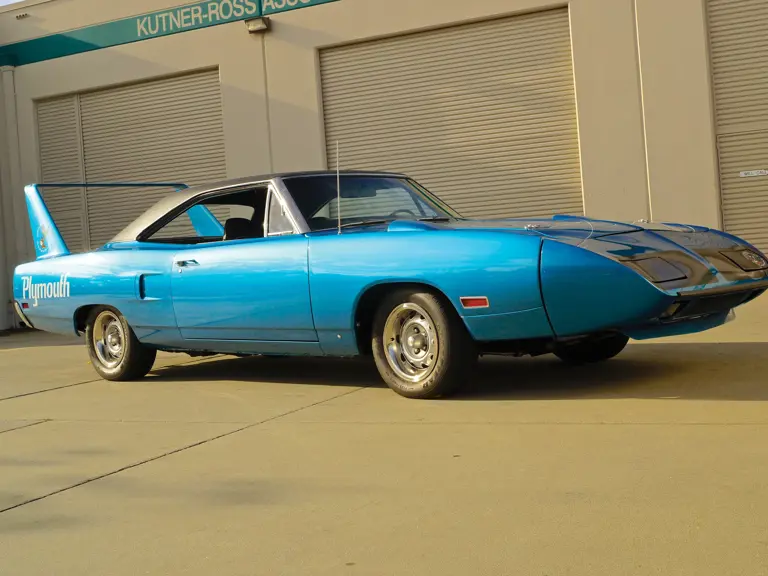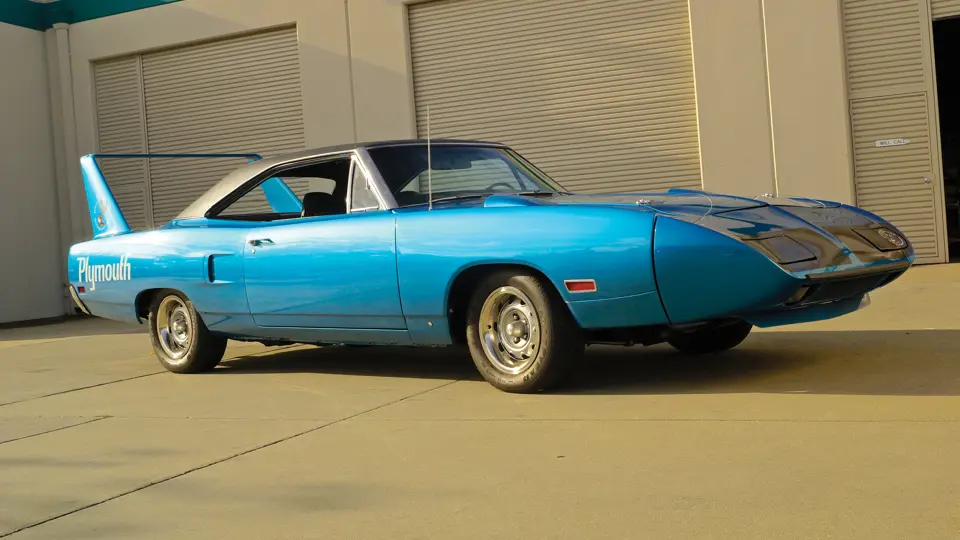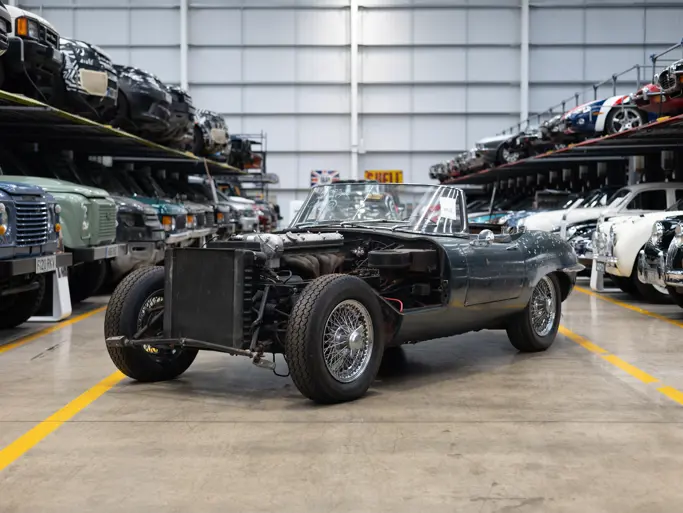 | Fort Lauderdale, Florida
| Fort Lauderdale, Florida
In the late 1960s, as the 426 cubic inch NASCAR Hemi engine reached its highpoint, Chrysler engineers realized that pure horsepower was no longer enough to win races. Richard Petty may have won 27 out of 49 races during the 1968 season in his Hemi-powered Plymouth Satellite, but the aerodynamically advanced Ford Torino enticed Petty to switch over to the Ford camp in 1969. Plymouth desperately wanted to have “The King” back behind the wheel of one their cars.
Chrysler’s only hope of beating Ford on the superspeedways was to reduce aerodynamic drag. Chrysler released the bullet-shaped Dodge Daytona and Plymouth Superbird, igniting the “aero wars”. While Petty was back in the Plymouth fold, he did not win the 1970 Grand National championship, but he did win 18 of Plymouth’s 21 victories in NASCAR’s 48-race season in 1970; and the distinctive Superbird, with its sloped nose and enormous rear wing, became a stock car racing icon.
It won in its first race at the 1970 Daytona 500 with Petty Enterprise driver Pete Hamilton. Hamilton would also drive the Petty Superbird to victory at both Talladega races; proof positive of this streamlined profile with its high downforce levels and the advantages it brought.
This immediately recognized vehicle is legendary because of its racing heritage, the successes it achieved on the track, and the pure audaciousness of the concept being made into a production car that one could drive daily.
This particular Plymouth Hemi Superbird was originally delivered to Bill Crouch Chrysler Plymouth Inc. in Englewood, Colorado and came well-equipped with a sticker price of $5,515.85. Of the approximate 1,935 Superbirds produced, only 135 were built with the desirable 426-cid, 425-hp Hemi V-8 engine with two four-barrel carbs. To further illustrate how uncommon this car is, out of this same 135 Hemi Superbirds, a mere 74 came fit with a TorqueFlite automatic transmission, such as with machine. A dyno sheet from 2001 comes with the Superbird, and shows this engine develops 461-hp at 5,200-rpm.
The car is beautifully presented in Blue Fire Metallic, as when new, and the bucket seat interior is displayed in Black and Charcoal. Among the equipment listed on the window sticker are the black vinyl roof, tinted windshield, remote driver’s side mirror, tachometer, AM radio, hood hold-down pins, performance axle package, woodgrain console; power steering and brakes with front discs.
According to accompanying documentation, this is a numbers matching example that also has its build sheet, window sticker, letter of authenticity from Galen Govier, copy of the Colorado title and original owner’s manual. The odometer shows 33,000 actual miles, certainly indicative of the care this fine machine has received over the years.
As one of the most desirable in a long series of Plymouth musclecars and surely the most recognizable of the slippery superspeedway NASCAR machines, the legendary Superbird is exceedingly collectable. This exciting Superbird is ready to take its next owner back to the time when musclecars ruled the streets and racetracks of America.





